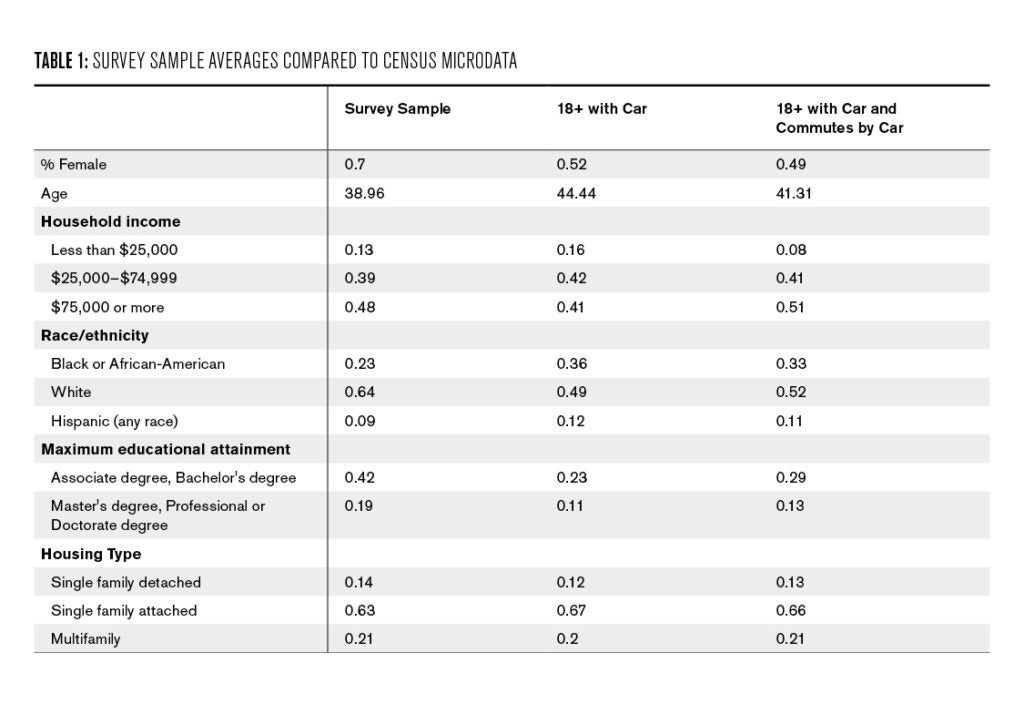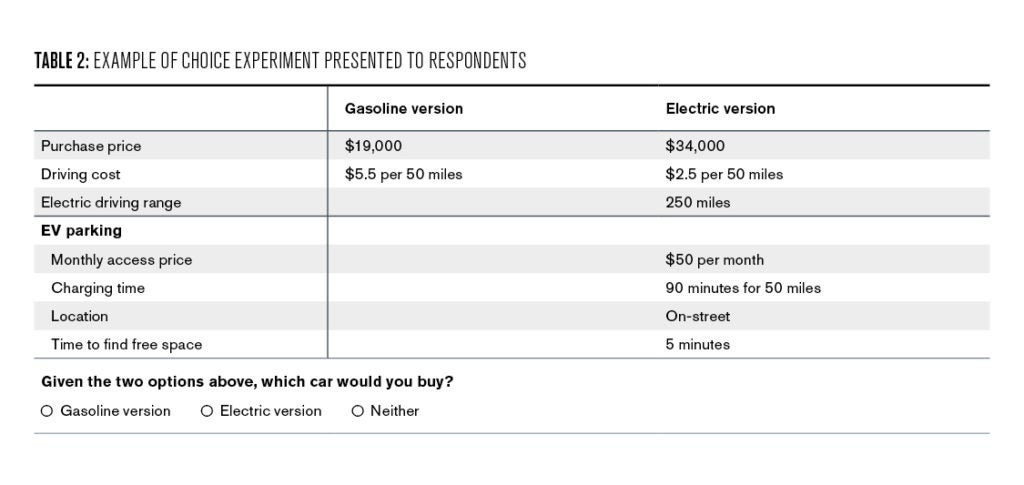
In urban areas, a dedicated parking space is coveted, and if you can find one, you'll pay a premium. For some Philadelphia residents, that premium was an electric car.
Introduction
In addition to a higher purchase price and limited driving range, a lack of existing charging networks presents one of the most substantial challenges to the widespread adoption of electric vehicles (EVs). In dense, urban settings, shorter trip distances and narrower roads may help make small EVs particularly popular.
However, many households do not have access to a dedicated parking space where an electric charging system might be installed. Furthermore, on-street parking spaces are frequently priced far below market-value and in short supply, leading residents to circle the neighborhood to find nearby parking spaces.
Parking policies are often among the most hotly contested topics in local community meetings and good parking spaces are coveted. Among identified incentives for reversing low demand for ultra-low emission vehicles, parking policies have not been widely addressed or analyzed.
A number of cities have local policies to encourage the creation of EV charging systems in new residential and commercial developments. For example, Boston requires that 5% of parking spaces in new construction projects be equipped with EV chargers and another 10% have the appropriate infrastructure to install chargers (City of Boston 2018). San Francisco mandates that 100% of parking spaces in new residential and commercial construction or major alterations to residential be EV-ready (Office of the Mayor 2017).
Many other cities provide free or discounted parking for EVs at charging stations in municipal garages. Far less has been done to provide local EV charging at on-street parking spaces, which generally represent the largest public supply of parking.
In 2007, in an effort to encourage the adoption of EVs, the Philadelphia City Council adopted legislation to allow residents to apply to have electric charging stations installed in front of their homes. Only the resident could use the charging station, and the parking space became limited to EVs only. Although residents were slow to adopt the policy, the policy became controversial as EV-driving residents began taking over parking spaces.
Opponents noted that the policy removed parking spaces from the general public and that wealthy residents were buying EVs simply to get a dedicated parking spot. With fewer than a hundred EV permits granted, in 2017 the City Council put a moratorium on new EV parking spaces.
Across the country, this on-street parking policy has an important and complex role to play in the diffusion of EV charging systems and the adoption of EVs.
To better understand the relationships between on-street parking policy and EVs, we conducted stated preference surveys in Philadelphia, Boston, and San Francisco to examine residents’ willingness to pay for convenient charging systems and parking spaces. If residents value dedicated parking spaces substantially more than convenient EV charging systems, residential-based on-street charging systems are unlikely to ever be politically palatable.
Moreover, evidence of residents’ willingness to buy EVs just to gain access to parking may help reveal underpricing and distortions in urban parking markets. The remainder of this policy brief summarizes our methods and main policy takeaways from modeling results in Philadelphia, Pennsylvania.
Research Design and Survey Sample
We collected stated preference surveys from 2520 adult drivers in Philadelphia (1745), San Francisco (452), and Boston (323) through the surveying firm Qualtrics. Qualtrics draws respondents from blended online market-research panels that compensate respondents with rewards, such as cash, airline miles, and gift cards.
Our survey sample respondents are drawn randomly from this survey population but limited to residents who have access to a private car or truck. While there are surveys from each Philadelphia zip code, responses come disproportionally from the Northeast, Northwest, and parts of the urban core.
Comparing our Philadelphia survey sample to census microdata, our respondents are substantially more likely to be female, white, and well-educated. The income, housing stock, and age of respondents are generally representative of the Philadelphia adult population with cars and those who commute to work by car.

Discrete Choice Experiment
We asked survey respondents to imagine themselves in a situation where they had to buy a new vehicle, had settled on a make and model, and had to make a choice about whether to buy an electric car or gasoline car. If respondents did not like either option, they also had a choice to opt out and choose not to replace their car. Only 14 respondents already owned an EV or plug-in hybrid. Another 150 reported their next vehicle would likely be an EV or plug-in hybrid. Each survey participant responded to eight discrete choice experiments (DCEs) about purchase preferences based on a variety of purchase prices and operating costs, as well as electric vehicle performance, charging system, and parking availability. Table 2 shows an example of a choice scenario presented to respondents.
DCEs consider a hypothetical market, or hypothetical market conditions, in the form of a controlled choice experiment where an experimental design is built to present tradeoffs among attributes and are commonly applied in markets with little available data on observed preferences, such as electric-vehicle markets.
The respondent evaluates the attribute tradeoffs of a selection of competing alternatives and simply chooses the preferred option. Using discrete choice models, we then estimate the weights that consumers use to decide which car is preferred. We use the tradeoff between price, EV attributes, and parking availability to derive estimates of consumers’ willingness to pay for EV attributes. We pivot purchase prices around respondents’ planned budget for acquiring a new car in the near term. Across choice games, the gasoline vehicle version varied from 85%, 100%, and 110% of the planned budget, while the electric version varied from 125%, 133%, and 150%.

Supplementary Data
We also matched our data to publicly available spatial data on population density, job density, neighborhood walkability, transit accessibility, median income, and road supply. We expect residents to be particularly willing to pay for parking or purchase an EV with dedicated parking in neighborhoods with high parking demand, limited parking supply, and worse options for walking or taking transit.
Estimation Strategy and Summary Results
We fit differing logit-type models to the collected choice microdata. Across specifications, respondents choose vehicles based on sales price, range, parking price, parking search time, and operating costs.
We focus our discussion on our best-fitting mixed logit modeland a latent class model. The mixed logit model reveals substantial variation in willingness to pay for parking, charge time, and range, while the latent class model divides preferences into two starkly different groups with highly variant stated EV preferences.
Members of the first latent class are more likely to be younger and more centrally located. They care more about parking than EV range or charge time. They are also substantially less likely to indicate a willingness to choose an electric vehicle at all.
Members of the second class are significantly more likely to be married, well-educated, wealthy, and conservative. They tend to reside in more distant single-family homes, care a lot about EV range and charging time, and are more likely to consider EVs.
Policy Takeaways
Our findings provide several insights into parking, parking policy, and the intersection between parking policies and EVs. First, our results are consistent with existing findings that residential on-street parking permits are underpriced (Shoup 2005) and that residents would pay substantially more for on-street parking (Guo 2013; van Ommeren, Wentink, and Dekkers 2011; Kobus et al. 2013; Pierce, Willson, and Shoup 2015).
Assuming residents park in their neighborhoods between 20 and 30 times per month on average, the implied average cost of looking for parking is between $7.2 to $10.8 per hour. Assuming half of Philadelphia’s 330,000 drive-alone car commuters—to say nothing of other drivers—lose two minutes to find parking on average each day, we estimate their net annual loss in consumer surplus at over $500 million.
We also find a good deal of variation in the willingness to pay for parking. This is unsurprising given the spatial and temporal variance in parking markets, which differ dramatically by neighborhood and time of day.
In questions about the ease of parking, 41% of respondents indicated that on-street parking was always easy. Unsurprisingly, these consumers are unlikely to put a premium on parking availability.
Another 32% of respondents indicated that parking was always, usually, or frequently difficult to find. This finding provides additional support for allowing residential parking permits to vary by location. The difference in average willingness to pay to save five minutes parking for class 2 respondents is six times more than the average willingness to pay to save two minutes for class 1 respondents.
In addition to reducing consumer surplus, failing to increase residential parking prices in high demand areas has created distortions that may hinder the deployment of EVs for the kinds of urban residents who appear least concerned about increases in EV range or reductions in charging time. Perhaps because on-street parking is so underpriced, respondents appear hesitant to rent off-street spaces with charging, which would be substantially easier to provide than on-street charging. A $100 per month increase in parking price per month has the same effect on an EV purchase as an $11,500 increase in purchase price. In aggregate, 56% of respondents chose an EV with a free dedicated charging space compared to just 28% at a price of $100 per month for parking.
However, despite a higher willingness to pay for parking, likely members of class 2 have a much lower probability of choosing an EV at all. Figure 1 plots the probability of choosing an EV for a representative individual from the two classes as a function of one-dimensional attribute changes while keeping everything else constant (as noted in the caption of the figure).
For example, a class 2 representative member’s probability of choosing an EV declines steadily from almost 75% at $5,000 to just under 30% at $50,000. By contrast a class 1 representative member’s probability of choosing an EV starts at just over 30% and approaches 0% by $30,000.
This difference suggests that targeting EV policies toward on-street parking may not be particularly effective. Drivers who are more likely to live in apartments in central locations, where parking is more challenging, tend to have a higher willingness to pay for on-street parking, but a much lower overall probability of choosing an EV.
Drivers who are more likely to choose an EV are also more likely to live in a single-family home in a less central neighborhood, where access to a home-charging system is easier. Although many additional factors may be at play, the low uptake of Philadelphia’s on-street EV parking program, with fewer than ten spots designated per year of the program, supports this assertion

These overall findings provide insights into public policies to promote EVs.
First, parking and charging facilities appear to present a challenge to EV adoption for young, urban residents who are most likely to live in the types of neighborhoods where trip distances are shortest, but also where parking is most difficult and most contested.
Second, a more market-based approach to on-street parking policy may have an added benefit of facilitating EVs in dense and central neighborhoods. Our findings suggest that the willingness to pay to reduce the time spent looking for parking is substantially higher than the price of a residential parking permit. In this context, allocating specific spaces for EVs is bound to be controversial. In the case of Philadelphia’s discontinued policy, complaints that residents purchase EVs in order to get a dedicated parking space appear to have merit.
Third, our findings also suggest additional merits to EV technologies, such as swapping batteries at stations instead of charging them or a network of commercial fast-charging stations, that separate charging systems from parking systems could encourage EV adoption in the types of neighborhoods where short average trip lengths are well-suited to EVs, but home-based charging systems are not. However, we also find that those most willing to pay for parking are also least willing to choose an EV. In terms of future work, we recommend that researchers incorporate neighborhood level features into stated and revealed preference analyses of EV-adoption. Features, like parking availability and average trip distances, vary by neighborhood and almost certainly influence whether consumers are willing to purchase an EV. Access to a home-based charging system is likely particularly important.
Further Reading
This policy brief summarizes the results of a paper titled “Electric Vehicles and Residential Parking in an Urban Environment: Results from a Stated Preference Experiment.” Read the full paper at: https://authors.elsevier.com/a/1aQC74rgZicuh3
Erick Guerra
Associate Dean for Research, Weitzman SchoolErick Guerra is Associate Dean for Research and Associate Professor in City and Regional Planning in the Weitzman School of Design.
Ricardo Daziano
Associate Professor, Cornell UniversityRicardo Daziano is an associate professor of civil engineering at Cornell University.
City of Boston. 2018. “EV-Boston: Electric Vehicle Resources.” Press Release. Boston.Gov. January 23, 2018. https://www.boston.gov/departments/environment/ev-boston-electric-vehicl….
Guo, Zhan. 2013. “Does Residential Parking Supply Affect Household Car Ownership? The Case of New York City.” Journal of Transport Geography 26 (January): 18–28. https://doi.org/10.1016/j.jtrangeo.2012.08.006.
Kobus, Martijn B. W., Eva Gutiérrez-i-Puigarnau, Piet Rietveld, and Jos N. Van Ommeren. 2013. “The On-Street Parking Premium and Car Drivers’ Choice between Street and Garage Parking.” Regional Science and Urban Economics 43 (2): 395–403. https://doi.org/10.1016/j.regsciurbeco.2012.10.001.
Office of the Mayor. 2017. “Mayor Lee and Supervisor Katy Tang Introduce Legislation Requiring All New Buildings to Be 100% “Electric Vehicle Ready”.” Press Release. Office of the Mayor. February 28, 2017. https://sfmayor.org/article/mayor-lee-and-supervisor-katy-tang-introduce….
Ommeren, Jos van, Derk Wentink, and Jasper Dekkers. 2011. “The Real Price of Parking Policy.” Journal of Urban Economics 70 (1): 25–31. https://doi.org/10.1016/j.jue.2011.02.001.
Pierce, Gregory, Hank Willson, and Donald Shoup. 2015. “Optimizing the Use of Public Garages: Pricing Parking by Demand.” Transport Policy 44 (November): 89–95. https://doi.org/10.1016/j.tranpol.2015.07.003.
Shoup, Donald. 2005. The High Cost of Free Parking. Chicago: Planners Press, American Planning Association.


